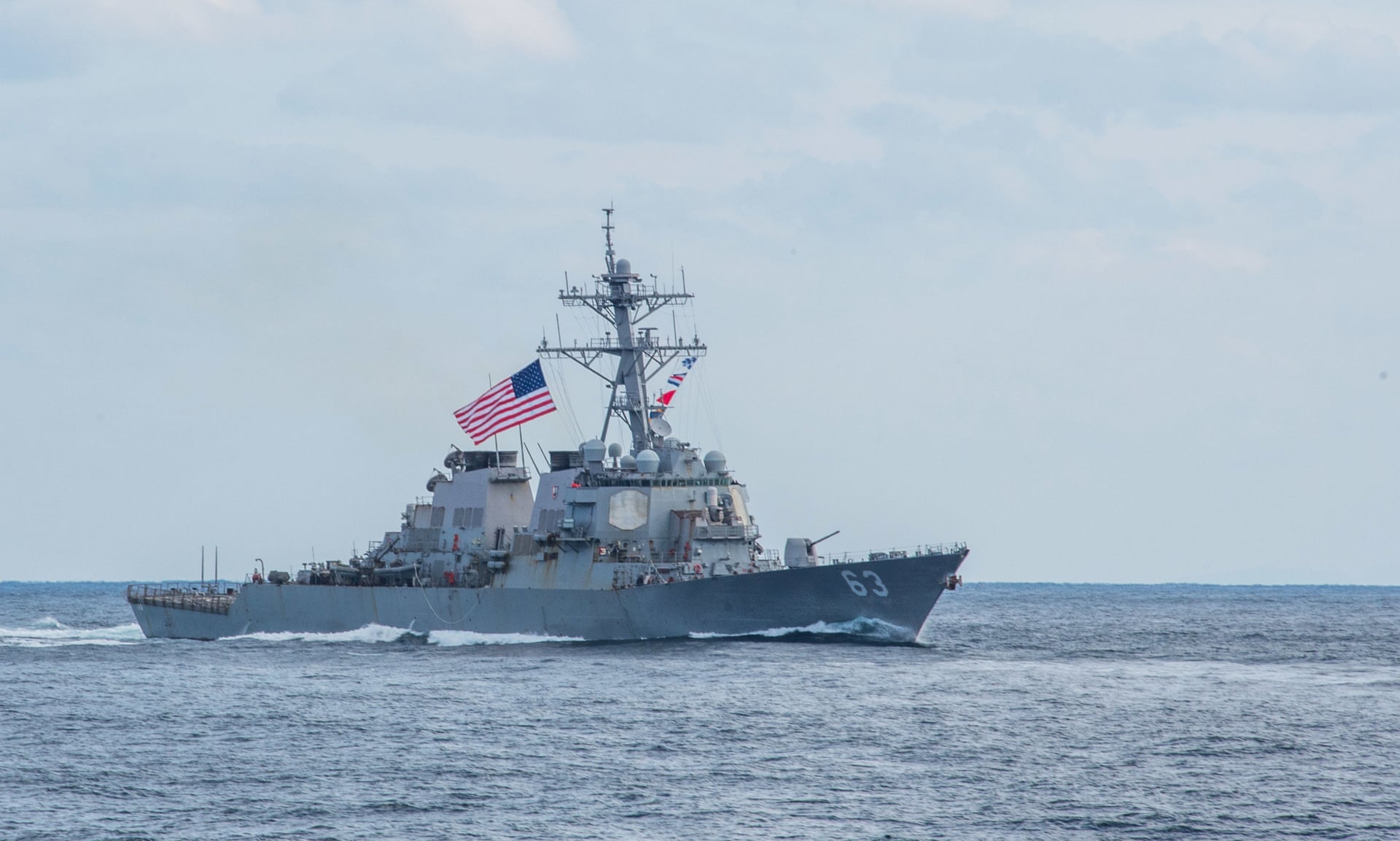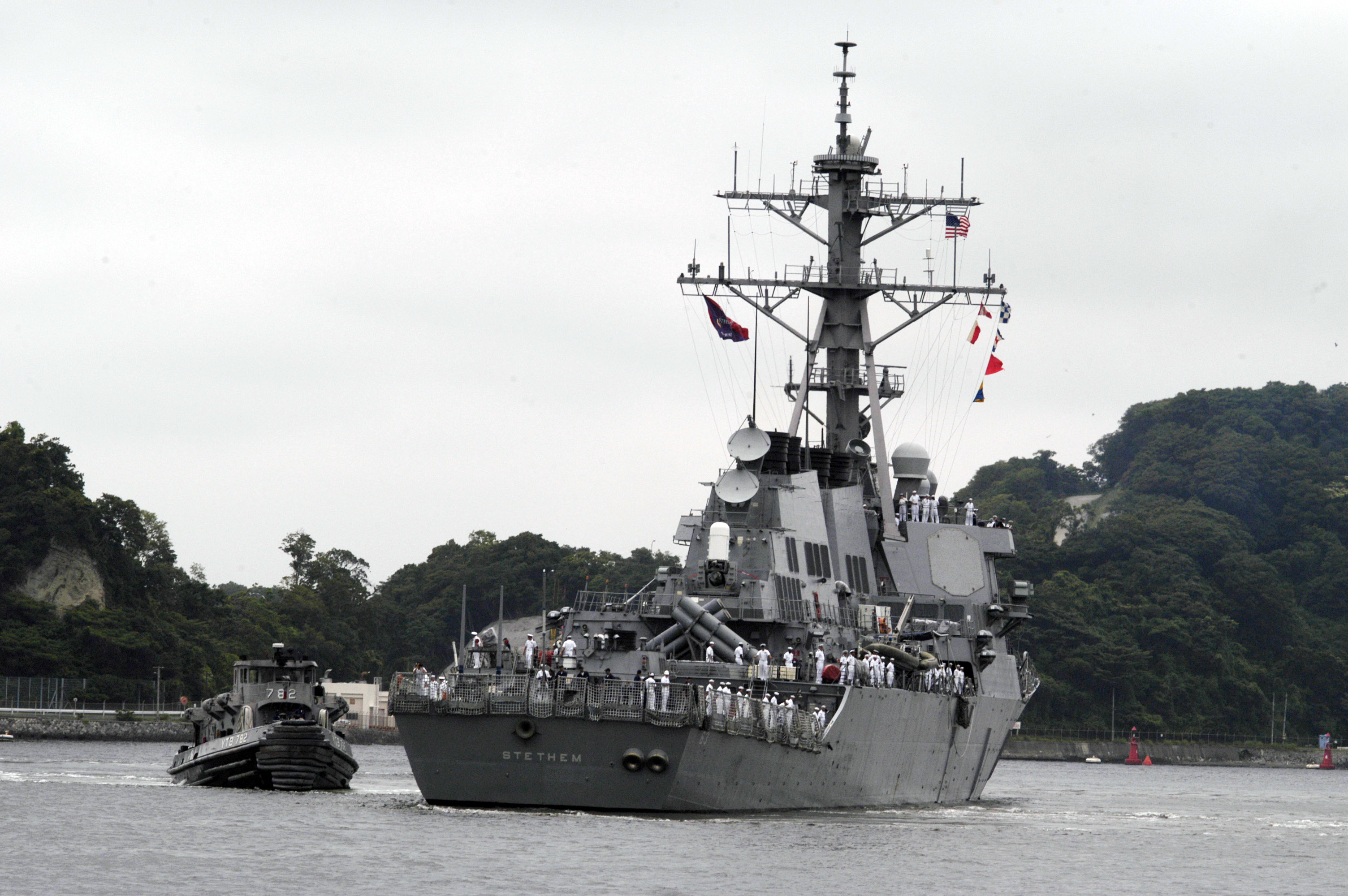Destroyers William P Lawrence and Stethem transited through the waterway on Sunday as Pentagon ups the ante with Beijing
Reuters
The guided-missile destroyer USS Stethem, pictured, sailed through the Taiwan Strait with USS William P Lawrence on Sunday.
The US military has sent two navy warships through the Taiwan Strait as the Pentagon increases the frequency of movement through the strategic waterway despite opposition from China.
Sunday’s voyage risks further raising tensions with China but will likely be viewed by Taiwan as a sign of support from the Trump administration amid growing friction between Taipei and Beijing.
Taiwan is one of a growing number of flashpoints in the US-China relationship, which also include a trade war, US sanctions and China’s increasingly muscular military posture in the South China Sea, where the United States also conducts freedom-of-navigation patrols.
The two destroyers were identified as the William P Lawrence and Stethem.
The two destroyers were identified as the William P Lawrence and Stethem.
The 180km-wide (112-mile) Taiwan Strait separates Taiwan from China.
“The ships’ transit through the Taiwan Strait demonstrates the US commitment to a free and open Indo-Pacific,” Commander Clay Doss, a spokesman for the US navy’s seventh fleet, said in a statement.
Doss said there were no unsafe or unprofessional interactions with other countries’ vessels during the transit.
Taiwan’s defence ministry said the US ships had sailed north through the strait.
“US ships freely passing through the Taiwan Strait is part of the mission of carrying out the Indo-Pacific strategy,” it said in a statement.
There was no immediate comment from China.
The United States has no formal ties with Taiwan but is bound by law to help provide the island with the means to defend itself and is its main source of arms.
The Pentagon says Washington has sold Taipei more than $15bn in weaponry since 2010.
China has been ramping up pressure to assert its sovereignty over the island, which it considers a wayward province of “one China” and "sacred" Chinese territory.
It said a recent Taiwan Strait passage by a French warship, first reported by Reuters on Wednesday, was “illegal”.
Beijing’s concerns about Taiwan are likely to factor strongly into this year’s Chinese defense budget, following a stern New Year’s speech from Xi Jinping, threatening to attack Taiwan should it not accept Chinese rule.
China has repeatedly sent military aircraft and ships to circle the island on drills in the past few years and worked to isolate it internationally, whittling down its few remaining diplomatic allies.
“The ships’ transit through the Taiwan Strait demonstrates the US commitment to a free and open Indo-Pacific,” Commander Clay Doss, a spokesman for the US navy’s seventh fleet, said in a statement.
Doss said there were no unsafe or unprofessional interactions with other countries’ vessels during the transit.
Taiwan’s defence ministry said the US ships had sailed north through the strait.
“US ships freely passing through the Taiwan Strait is part of the mission of carrying out the Indo-Pacific strategy,” it said in a statement.
There was no immediate comment from China.
The United States has no formal ties with Taiwan but is bound by law to help provide the island with the means to defend itself and is its main source of arms.
The Pentagon says Washington has sold Taipei more than $15bn in weaponry since 2010.
China has been ramping up pressure to assert its sovereignty over the island, which it considers a wayward province of “one China” and "sacred" Chinese territory.
It said a recent Taiwan Strait passage by a French warship, first reported by Reuters on Wednesday, was “illegal”.
Beijing’s concerns about Taiwan are likely to factor strongly into this year’s Chinese defense budget, following a stern New Year’s speech from Xi Jinping, threatening to attack Taiwan should it not accept Chinese rule.
China has repeatedly sent military aircraft and ships to circle the island on drills in the past few years and worked to isolate it internationally, whittling down its few remaining diplomatic allies.
_aligns_course_in_preparation_for_an_underway_replenishment_in_the_Pac.jpg)





